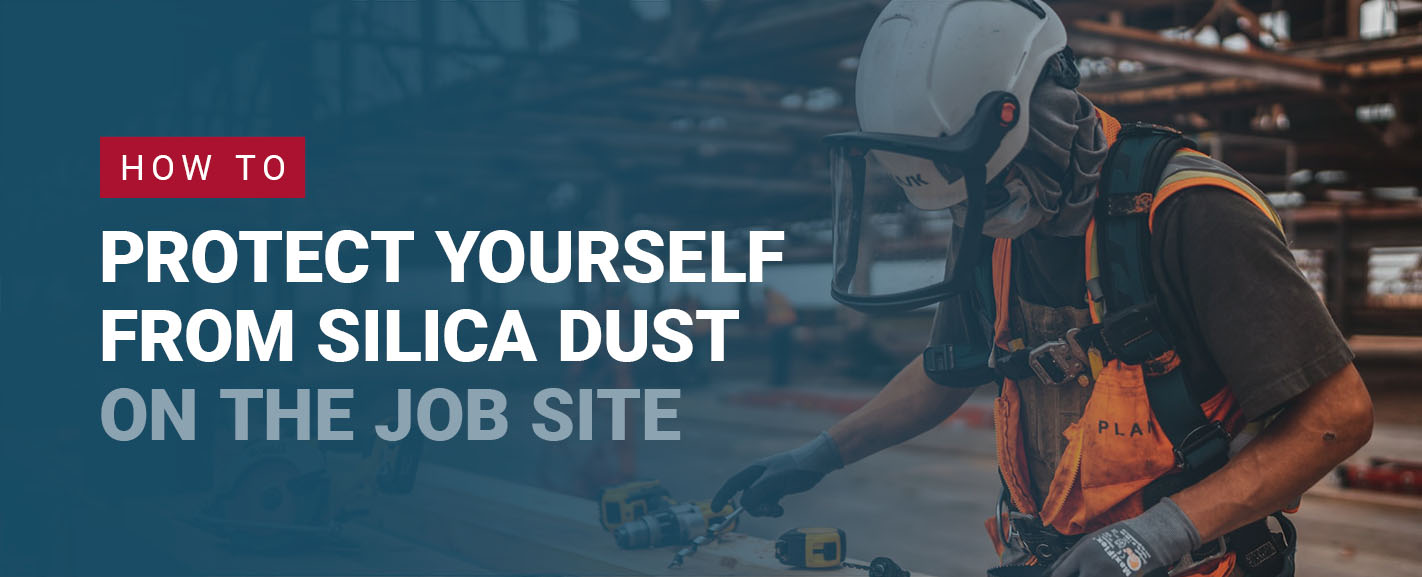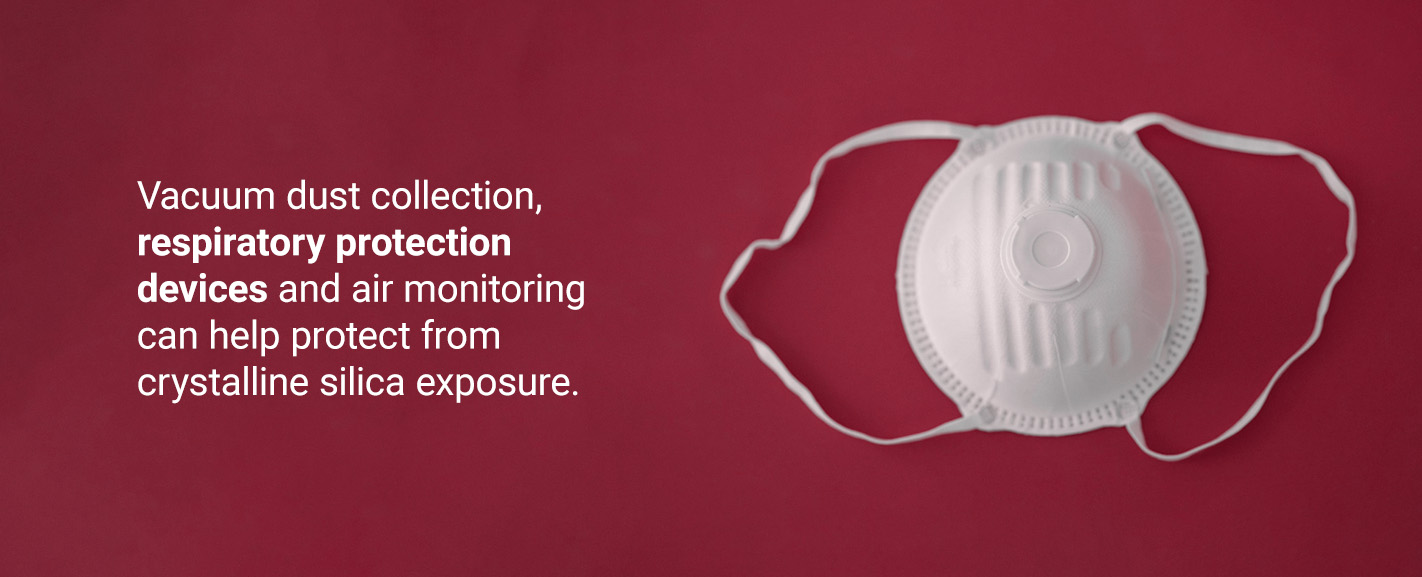
Jump To:
- Who is At Risk for Crystalline Silica Exposure?
- How to Protect Yourself from Illness Caused by Crystalline Silica Exposure
- Health Effects of Silica Dust
- NASP Silica Dust Safety Training
If you work in construction, you know that you’re being exposed to many different materials and tools. You know you’re going to have dusts and remnants from the materials flying everywhere and getting all over you. You’re probably also familiar with the exposure to crystalline silica. But are you aware of just how dangerous it can be?
For those who work in construction, as well as public health and safety workers and even fire department employees, you need to understand the risks of being exposed to silica dust and how to protect yourself from it.
Purchase the Silica Dust Specialist Course
Who is At Risk for Crystalline Silica Exposure?
As previously mentioned, construction workers are commonly known to be exposed to silica dust. However, there are a number of other workers who are at risk of being exposed. Those who work in the general industry employment sector are also at risk of being exposed. According to the Occupational Safety and Health Administration (OSHA), the general industry includes jobs in industries outside agriculture, construction or maritime.
Silica particles can be released if you chip, cut, drill or grind materials like:
- concrete
- masonry
- sandstone
- rock
- paint
- abrasives
- mortar
- plaster
- shingles
- soil
- brick
- tiles
- some plastics
If you work in the manufacturing of the above materials, demolition or road construction, you have probably been exposed to silica dust particles. Even if you’re just a janitor or security guard working near a site with these materials, you run the risk of being exposed.

How to Protect Yourself from Illness Caused by Crystalline Silica Exposure
When someone inhales silica, the lung tissues develop fibrotic nodules and scarring around the silica particles. If the nodules continue to grow and reach larger sizes, it can negatively effect your breathing by making it harder to take in enough oxygen.
Obviously, you’re going to want to avoid silica dust as best as you can, so there are some prevention steps you can take to protect yourself and your coworkers from being exposed.
- Wet methods. There are certain steps you can take to introduce fine, water droplets (e.g., mists) into the air that can help suppress some of the particles flying everywhere while working. In turn, this will cut down on the amount of silica dust surrounding you and your work area.
- Vacuum dust collection. There are dust collection systems that will suck the particles out of the air for you.
- Respiratory protection devices. These devices are a form of personal protective equipment (PPE) to protect you from inhaling anything you shouldn’t be inhaling.
- Operator isolation. Those working with the materials that can produce silica should be separated from those who aren’t. This keeps you from exposing extra people.
- Fans.
- Periodic medical exams. For those that could be exposed, consider regular medical exams. This helps detect any medical conditions early on so that any diagnosis and treatment can be administered as soon as possible.
- Air monitoring.
- Hazard warning signs. Make sure there are signs warning of the hazard posted around. This will help keep people from wandering into the affected area and exposing themselves.
- Proper housekeeping procedures. You should be cleaning and getting rid of excess dust on a regular basis. This will keep it from being stirred up every time someone moves.
One of the best ways to protect yourself and your employees is by investing some time into a training program, such as those provided by the National Association of Safety Professionals (NASP). Training programs and certifications will ensure that you and your team are properly trained when it comes to workplace safety and how to handle it.
Silica Dust Specialist Certificate
Health Effects of Silica Dust
The scary thing about silica dust is that it is extremely small, so you can be inhaling the particles and not even know it. Then, once the particles make their way into your lungs, they can cause harmful effects to your body.
Those who have been exposed to silica dust are at risk of developing lung cancer, silicosis, kidney disease or chronic obstructive pulmonary disease (COPD). If you’re not familiar with silicosis, it is the scarring and stiffening of the lungs, and there is no cure for this.
As previously mentioned, exposure can lead to silicosis (which can increase your risk of developing tuberculosis). There are 3 types of silicosis.
- Chronic. This occurs when someone has been exposed to lower levels of silica and after 10 or more years of exposure.
- Accelerating. You’ll usually develop this within 5-10 years of being exposed, but it is usually due to higher levels of silica.
- Acute. This occurs when you’ve been exposed to very high levels of silica, and it can develop as quickly as a few weeks of exposure. You could also see effects after 4-5 years of exposure.
You may have thought that a little exposure to silica wouldn’t harm you, but now you can see that even small exposures over a long period of time can be harmful to your health.
In addition to silicosis, you could develop COPD from silica exposure. While COPD attacks and affects your breathing, it can cause you to develop other issues as well, such as bronchitis, emphysema and chronic airway obstruction. If you are developing silicosis or COPD, you could be experiencing shortness of breath, chest pains and/or a cough.
The effects of silica dust exposure are very serious because as you can see, it can really take a toll on your health.
National Association of Safety Professionals Silica Dust Safety Training
If you want your team to truly understand the seriousness of silica and how to handle working with it, you should consider proper training and certifications. While some workers may have past experience with silica dust from past jobs, you want everyone to understand how you want it handled at this place of work. Everyone should be on the same page about how to help prevent illness from silica dust exposure.
At NASP, we want to help you provide the proper training to your team. We can accommodate you and your team however you may need, as we offer on-site training, live courses, online courses and certifications.
If you’re interested in any of our products for your team, you can contact us on our website or give us a call at (800) 922-2219. Contact us today for all your training needs!







